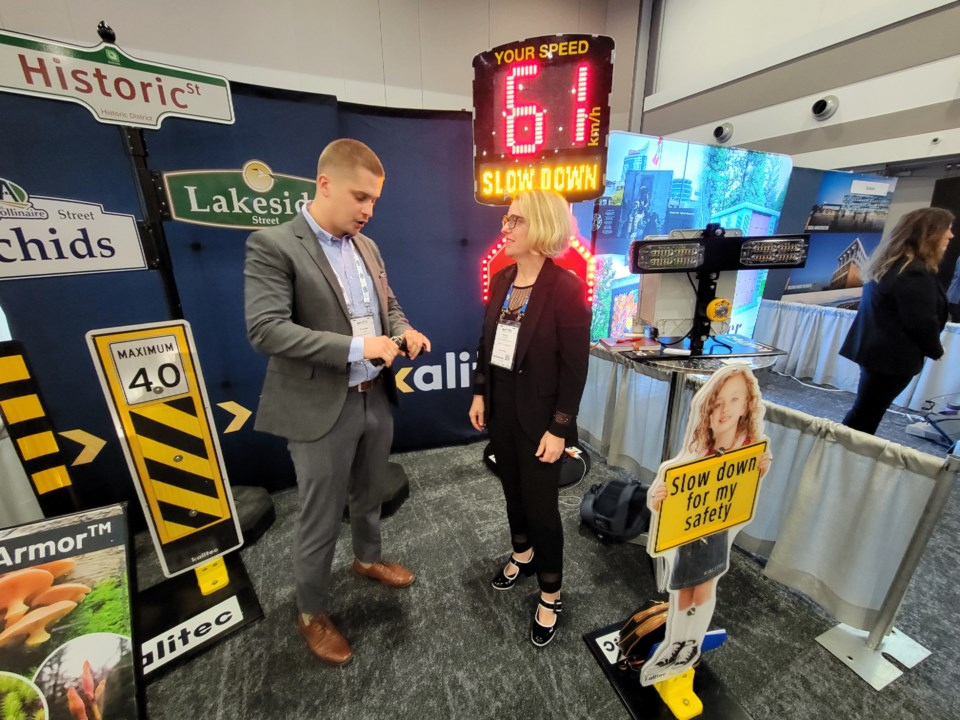Electric street sweepers, audible wayfinding, new traffic-calming technology and container housing options are just a few of the new, innovative products on display at the trade show at this year’s Association of Municipalities of Ontario (AMO) conference in Ottawa, which runs Aug. 18 to 21.
The conference involves delegations from Ontario's 444 municipalities, plus provincial politicians and ministry staff participating in meetings, workshops and a trade show.
Here are five innovations from this year's trade show:

Pallet Shelters
In response to the homelessness crisis plaguing Ontario and beyond, Pallet Shelter is a rapid-deploy interim sleeping shelter set up within a village model. Individual units include a bed, desk and storage, and only require a hook-up to power. There are also communal bathroom, laundry and community gathering pallets that can be mixed and matched depending on the needs of a community.
The technology can also be deployed in natural disaster situations to get temporary housing put up quickly.
Pallet Shelters are standing in 86 cities across the U.S.
“In Canada, we have a sites in Kelowna and a few in Nova Scotia. We don’t have any in Ontario yet,” said Amy King, CEO of Pallet Shelter.
The concept for the company includes hiring people who have previously been unhoused who have stayed in the temporary shelters, and offers them employment to help them get back on their feet.
“The vast majority of our staff who build these are folks that are exiting homelessness or the justice system,” said King.
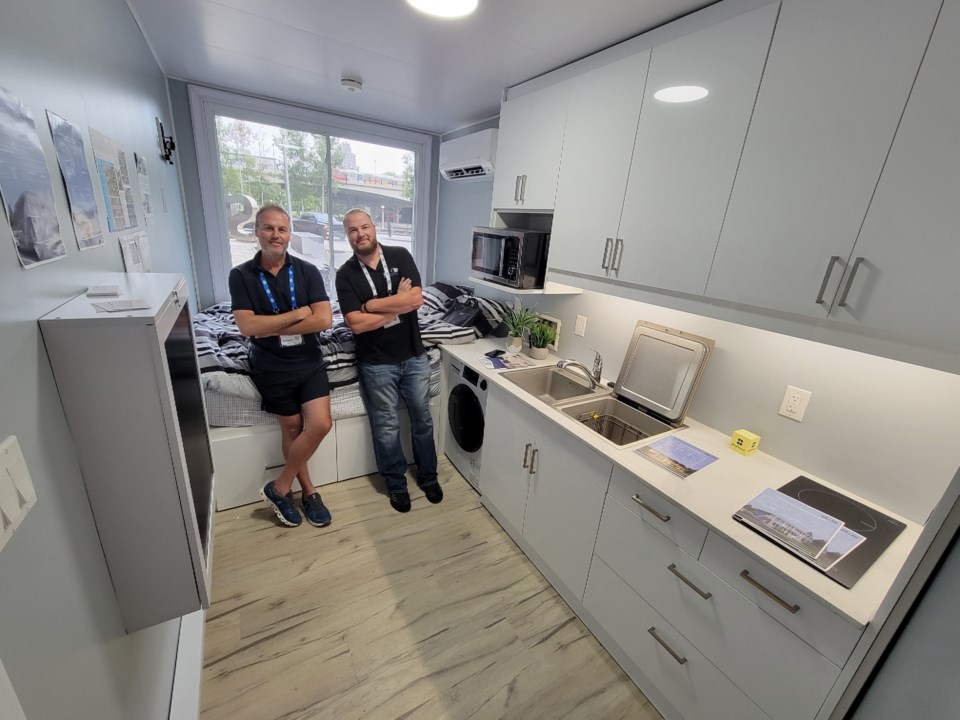
Now Housing
Now Housing had a full modular housing solution on display at the conference, built out of shipping containers and fully furnished with appliances. The company varies in what they can provide, from offering tiny units for emergency shelters, up to pre-fabricated apartment buildings and six-plexes.
“We’ve built some homelessness encampments in Waterloo and London because they needed some emergency housing where no one’s building,” explained Matthew Lubberts, president of Now Housing.
The units have also been used as workforce housing, in municipalities where it’s difficult to attract certain professionals in sectors such as health care, construction or mining because of a lack of reasonably priced housing. Now Housing collaborates with Blue Branch on its workforce housing, which is a company that helps connect labourers with work opportunities.
“A lot of hospitals are closing up their emergency rooms on weekends because they don’t have staff. There’s no housing for the staff,” said Lupperts. “One of the benefits is we can be building the building, while the municipality is getting the land ready.”
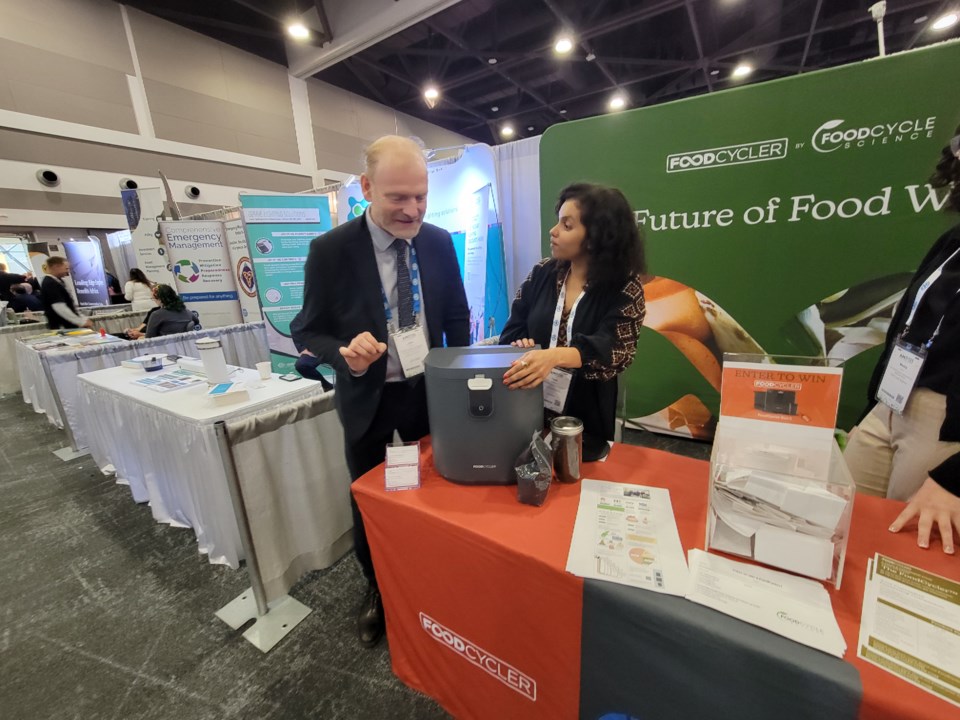
FoodCycler
The FoodCycler is a counter-top machine that processes organics into a fine nutrient-rich soil that can be used as fertilizer in gardens and plants. The product eliminates the smell that comes along with organics, and is designed for people who may like to separate organics but don’t see themselves tossing enough to fill an entire green bin every week. The company has partnerships with more than 150 municipalities in North America, 90 of which are in Ontario.
The company attended the conference to connect with new potential municipal partners, and municipal branding is available for the machine. If used by enough households, the machine has the potential to eliminate or significantly reduce the need for regular organics collection.
“It helps keep food waste out of landfills,” said Christina Zardo, director of municipal solutions for FoodCycle science. “We work with municipalities because they have to manage their waste. A lot of municipalities in Ontario are running out of landfill space.”
“It reduces costs for municipalities,” she said.
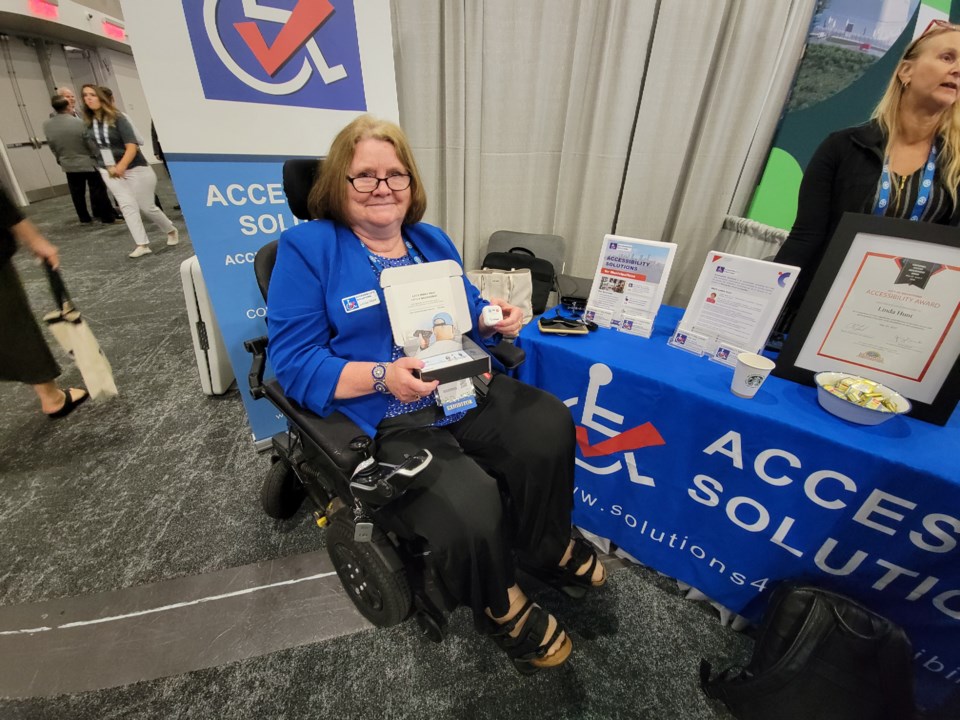
RightHear
RightHear is audible wayfinding users can access through their smartphone. Already available in more than 2,500 locations across the world, the organization behind it Accessibility Solutions attended the conference to get more of a foothold in the Ontario market.
“It can find a venue through the GPS on your phone,” explained Linda Hunt, CEO of Accessibility Solutions. “Most signage is English, French and braille. Ninety per cent of people who are blind don’t know how to read braille.”
“This (technology) will orient them through a facility through their smartphone,” she said.
Municipalities are only responsible for installing a beacon in the general area of a facility, which could include parks, recreation facilities, conference centres, museums and libraries. The application offers wayfinding in 26 different languages.
“It’s especially useful in municipalities with a lot of tourism,” said Hunt.
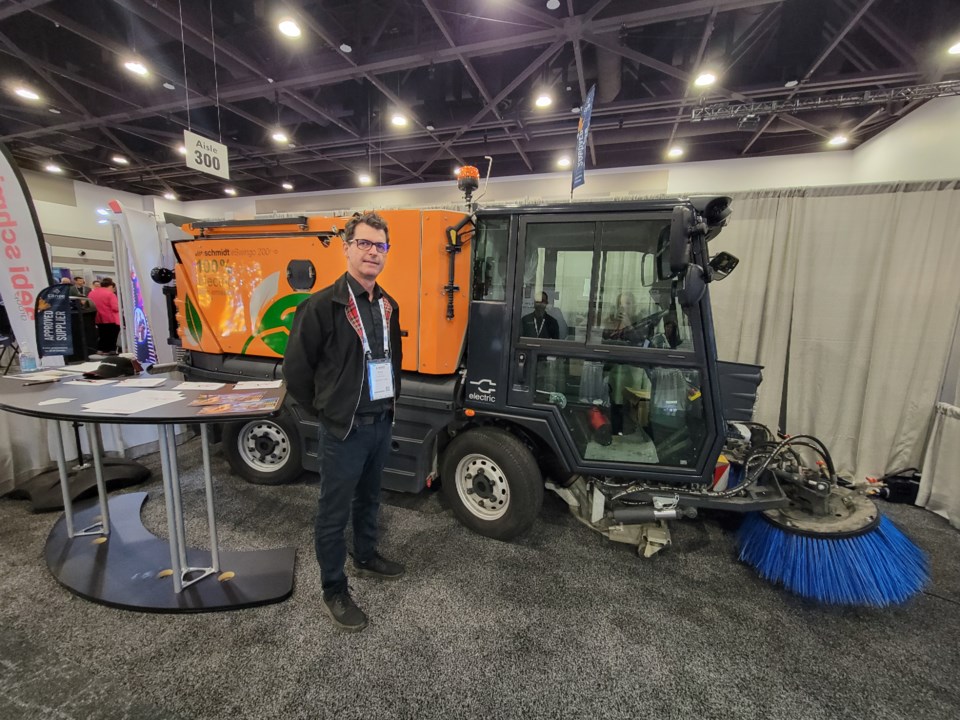
Schmidt eSwingo 200
Aebi Schmidt Canada brought their new electric street sweeper to the trade show. The company is based in Switzerland and Montreal but is opening their first Ontario service centre location in Brantford in October, and are working to get their product in front of Ontario municipalities.
The Schmidt eSwingo 200 is 100 per cent electric, and is intended to be used to clear trails, sidewalks, driveways and parking garages.
“This is our smallest version, based on a diesel version we’ve been selling for about 20 years. This new version has been on the market for about three years and brought into Canada this year,” said Simon Boucher, director of sales for Aebi Schmidt.“It’s fully electric, zero emissions,” he said. “We want to grow in Ontario, and be closer to customers.”
Kalitec
Kalitec offers new sign options for municipalities when it comes to traffic calming that are designed in-house, from the design to installation. The company creates new designs for common signs, including traffic signs, bollards, chicanes, speed radar signs, cutouts and flexible markers.
“Our business case is about having longer-lasting solutions that will last eight to 10 years,” said Nicholas Lavallee with Kalitec, demonstrated a new design for a stop sign post that has gained traction in Quebec, where a pin is driven inside the post and into the ground. If a vehicle collides with the post causing significant damage, only the pin needs replacing, not the entire post.
“It’s more cost-effective. For public works, it’s two bolts. It saves a lot of time,” he said. “It’s about having products that are smarter. It makes sense.”
